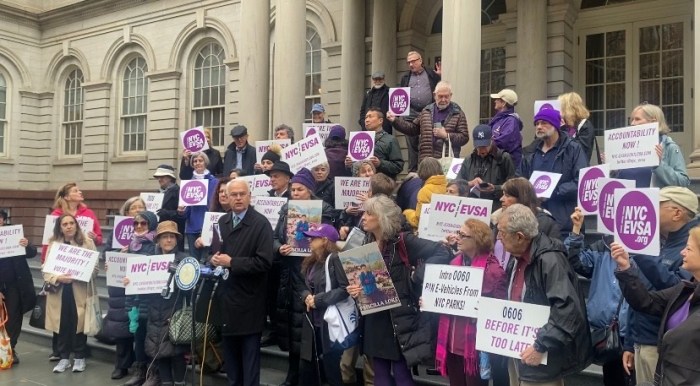By Alexander Dworkowitz
While many Queens airline jobs are in jeopardy in the aftermath of the attack on the World Trade Center, one Flushing organization is expanding as others contract.
Commuter Link, a non-profit organization, was founded in 1989 as E-Z Rider with the purpose of reducing traffic congestion and vehicular emissions by organizing carpooling. Recently Commuter Link has seen a drastic increase in its business.
Two weeks ago, Mayor Rudolph Giuliani instituted new traffic restrictions forbidding single occupancy vehicles from entering Manhattan during the morning rush hour. Thousands of commuters were suddenly forced to find other means of reaching Manhattan. While many turned to public transportation, others turned to Commuter Link and its carpooling system.
“Before Sept. 11, we had a few calls a day on our toll free number,” said John Galgano, president of the organization. “Now we get a few hundred. We’re getting calls from Pennsylvania.”
In response to increased demand, Commuter Link is in the process of enlarging its staff from three to five. Its office is now open 12 hours a day and weekend as well.
Commuter Link provides its participants with a computer printout of people who live in their area, work in the same area and are willing to carpool. The program guarantees a ride home. If for some reason the carpool does not work out on a particular afternoon, Commuter Link pays for its participants to return home on public transportation.
Despite the large jump in business, Galgano said that the organization has become more efficient in recent weeks.
“It normally takes three, four days, up to a week,” said Galgano of the period required for Commuter Link to match participants. “Now we’ve been faxing information in one day.”
“It’s pretty convenient,” said Joe Milazzo of carpooling through Commuter Link. Milazzo, a resident of the Bronx, began commuting with a friend in 1975 to LaGuardia Airport, but has since signed on to Commuter Link for the insurance of a free ride home. He said he saved $7 a day in tolls, plus the cost of gasoline.
“It saves wear and tear on the car,” he said.
Galgano estimated that before Sept. 11, 60 percent of those who used Commuter Link either lived or worked in Queens. But that demographic has quickly changed with 95 percent of post-Sept. 11 applicants working in Manhattan, most of whom are not from Queens.
Just as many commuters have remained surprisingly understanding of citywide traffic delays, Galgano said most of the organization’s applicants have been patient with Commuter Link.
“I expected to get some irate people,” he said. “But out of the hundreds and hundred of calls we’ve gotten, we’ve gotten maybe five people complaining.”
Reach Reporter Alexander Dworkowitz by e-mail at Timesledger@aol.com or call 229-0300, Ext. 141.


































